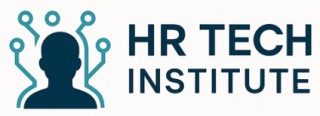
Understanding the Core Features of Workday and ADP
Exploring Core Functionalities of Workday and ADP
In the realm of HR technology, the options for comprehensive solutions have increased. Among these, Workday and ADP distinguish themselves through their suite of features. Their capabilities in HR, workforce management, and payroll processing offer an array of benefits tailored to modern business needs. Both Workday and ADP shine in the domain of payroll management. However, their approaches differ as Workday payroll integrates seamlessly with its human capital management (HCM) system, showcasing strong coherence in talent management and benefits administration. In contrast, ADP vehicle excels with its global payroll reach, offering specialized options for small businesses up to mid-sized enterprises. Their employee management tools also garner attention. Workday is recognized for its user-friendly interface and comprehensive workforce workday solutions, whereas ADP workforce management software is lauded for its efficiency in time tracking and compliance. The advantages present specific choices to businesses depending on their immediate needs. Those seeking an intuitive user experience with robust payroll capabilities frequently favor Workday, while organizations aiming for a globally compliant, adaptable platform may find ADP more fitting. To understand how these systems facilitate improved HR operations, dive into resources that explore streamlining HR document management for further clarity on enhancing HR efficiencies.User Experience and Interface: A Closer Look
A Dive into User Experience and Interface Design
Examining the user experience (UX) of HR tech solutions like Workday and ADP is critical in determining which platform aligns best with your organization’s needs. Both systems are renowned for their comprehensive workforce management capabilities. Yet, their UX and interface design play a pivotal role in day-to-day operations, from payroll processing to time tracking. When considering Workday, its interface is often praised for its intuitive design and emphasis on user-friendly navigation. Many users commend its mobile accessibility and streamlined experience for managing employee data and payroll. Workday’s HCM modules offer seamless integration, which enhances the workflow, especially in talent management and benefits administration. On the other hand, ADP, with its ADP Workforce Now platform, is favored for its comprehensive approach to payroll software and HR solutions. However, some reviews suggest that its interface could be more intuitive compared to Workday. Users appreciate ADP for its robust compliance features and global payroll capabilities, making it a popular choice for multinational businesses. Both systems bring unique strengths to the table. While Workday shines in offering a fluid experience with its adaptive interface, ADP leverages its vast array of features and strong reputation in payroll processing. When evaluating these systems, it's vital to balance the pros and cons by considering how each platform aligns with your business’s scale and complexity. Ultimately, enhancing HR efficiency could benefit significantly from the right system in place. For further insights on this topic, we encourage you to explore more on how financial ERP systems can streamline HR operations here.Integration Capabilities with Existing Systems
Assessing Integration Capabilities with Established Systems
In an era where seamless operations are paramount, the ability of HR software to integrate well with other existing systems is crucial. Workday and ADP both present their unique approaches to integration, impacting how businesses can manage their HR processes efficiently. When it comes to connecting with third-party platforms, Workday offers robust API frameworks and integration enterprise services. Workday's flexibility allows for comprehensive connectivity with various systems, including financial ERP systems, enhancing HR efficiency across the board. ADP, on the other hand, focuses on the ADP Marketplace, a sprawling ecosystem of applications allowing businesses to tailor integrations according to their needs, especially beneficial for payroll processing and workforce management. Workday’s strength lies in its unified Global Payroll Cloud—a feature that ensures seamless payroll integration across different locations. This can be a significant advantage for organizations with a global workforce that require simplified cross-border payroll processes. Meanwhile, ADP provides a comprehensive payroll software system that's known for its compatibility with a plethora of business systems. With tools like the ADP Workforce Now platform, businesses can enjoy streamlined time tracking and compliance management, especially for mid-sized and small businesses. This capability can greatly reduce errors and improve the employee experience by ensuring that data from various HR systems is consistently synchronized. As businesses evolve, the need for systems that readily integrate with existing technologies becomes a top priority. Whether it’s enhancing benefits administration or optimizing talent management, choosing between Workday and ADP largely depends on the size of the business and the complexity of its HR processes. Evaluating the integration capabilities of each system with current and future technological needs can offer significant long-term benefits to any organization. For a deeper dive into how these systems impact HR operations, you might find insights in this resource on workforce impacts.Scalability and Flexibility for Growing Businesses
Assessing Scalability and Adaptability for Evolving Enterprises
When evaluating HR technology solutions like Workday and ADP, understanding how each platform can scale and adapt to your business's growth trajectory is vital. Both systems offer unique advantages, catering to varying needs depending on your organization's size and complexity. Workday's human capital management (HCM) software is renowned for its scalability, making it a viable solution for enterprises experiencing rapid growth. Its system architecture is designed to handle significant increases in employee data and complex organizational structures, a crucial factor for businesses anticipating expansion. Features like talent management and benefits administration ensure that businesses can seamlessly manage their workforce as they evolve. On the other hand, ADP Workforce excels in providing robust solutions for both small and mid-sized businesses that may require less immediate large-scale growth but still need efficient payroll and HR management. Their platform emphasizes flexibility in payroll processing and time tracking, offering businesses the ability to maintain compliance with ease. Both Workday and ADP platforms have demonstrated adaptability in integrating new features and updating their offerings to meet changing business landscapes. Whether you choose Workday for its comprehensive capabilities or ADP for its user-friendly interfaces, understanding your business's current scale and future needs will be crucial in making an informed decision. Ultimately, both platforms offer distinct benefits; your choice should align with your company's long-term strategy and immediate operational requirements.Pricing Models and Cost Considerations
Exploring Different Pricing Models
Choosing between Workday and ADP for your payroll processing and workforce management needs involves understanding the cost structures of these platforms. Both systems offer distinct pricing models, influenced by the features and scale of services they provide. Each has its strengths, depending on the complexity of your business and budget considerations.
- Workday: Often seen as a comprehensive HCM solution, Workday's pricing is typically based on a subscription model. This means you'll pay a recurring fee which is determined by your organization’s size and specific modules you opt for, such as Workday HCM or Workday Payroll. This model is particularly advantageous for businesses expecting growth, as it allows scalability without incurring exorbitant costs upfront.
- ADP: ADP Workforce Now, one of ADP's popular offerings, usually follows a tiered pricing structure. This can be more user-friendly for small businesses as well as mid-sized entities who may have varying needs over time. ADP's flexible pricing caters to different business scales through predefined packages, allowing organizations to choose based on their workforce management and compliance requirements.
Cost considerations should also factor in any additional expenses related to integration with existing systems, as discussed earlier. The more comprehensive your operational needs, the more likely you are to encounter ancillary charges, influencing the final cost of your HR tech system.
Moreover, reviews and insights from existing users often highlight the benefits of both systems' pricing strategies. Workday's model facilitates gradual adjustment to expanding feature demands, while ADP's approach allows incremental service enhancement without significant upfront investment. Understanding these nuances can help align your choice with your business's financial strategy.













